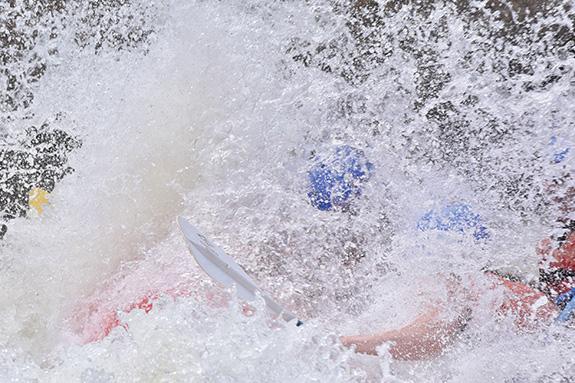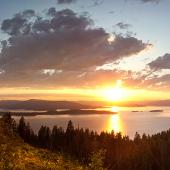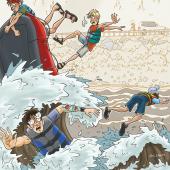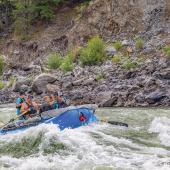White Warning
Water is always working, reorganizing the land. —Tim Palmer, Endangered Rivers and the Conservation Movement
In spring, water is released from the bonds of winter, let loose on the land. It’s impatient in its freedom, rushing down from the high alpine, through the canyons, and out into the valleys.
Kayakers, rafters, and anglers are impatient too, rushing back to the water. In their haste, some forget the power of the river and fall victim to the release. This spring, play it safe and avoid a similar fate.
Save Yourself
Still sporting that faded life vest you wore in high school? PFD floatation diminishes over time, meaning that when you take a swim in a nasty rapid, you now have one more thing to worry about: keeping your mouth above water. And body type affects buoyancy—fat floats and muscle sinks. Don’t wait to learn this the hard way; find a nice balance of comfort and floatation (low-profile vests start at 15.5 pounds; I’m a sinker, so I wear one with 22). As for that old vest, take it on calm water, where safety is less of a concern but state law nonetheless mandates a PFD.
Read the River
River-rescue courses are a great way to stay prepared, and they’re not just for whitewater enthusiasts. If you spend significant time on the water—rivers or lakes—check out Montana River Guides. They offer courses locally through Montana Whitewater, with everything from basic rescue programs to full-on guide school. montanariverguides.com
Class in Session
Understanding the rapid-rating system is also key. Here are the basics:
Class I – Easy. Smooth water; light riffles; clear passages, occasional sand banks and gentle curves. The most difficult problems might arise when paddling around bridges and other obvious
obstructions.
Class II – Moderate. Medium-quick water; rapids with regular waves; clear and open passages between rocks and ledges.
Class III – Moderately difficult. Numerous high and irregular waves; rocks and eddies with passages that are clear but narrow and requiring experience to run.
Class IV – Difficult. Long, powerful rapids and standing waves; souse holes and boiling eddies. Powerful and precise maneuvering required.
Class V – Extremely difficult. Long, violent rapids that follow each other almost without interruption. River filled with obstructions. Big drops and violent currents.
Class VI – Extraordinarily difficult. Paddlers face constant threat of death because of extreme danger.












